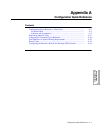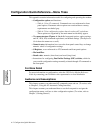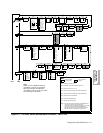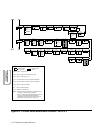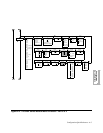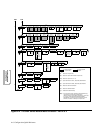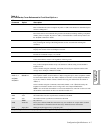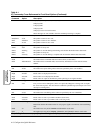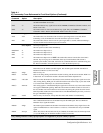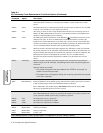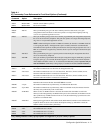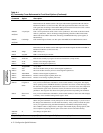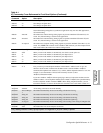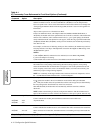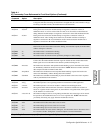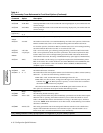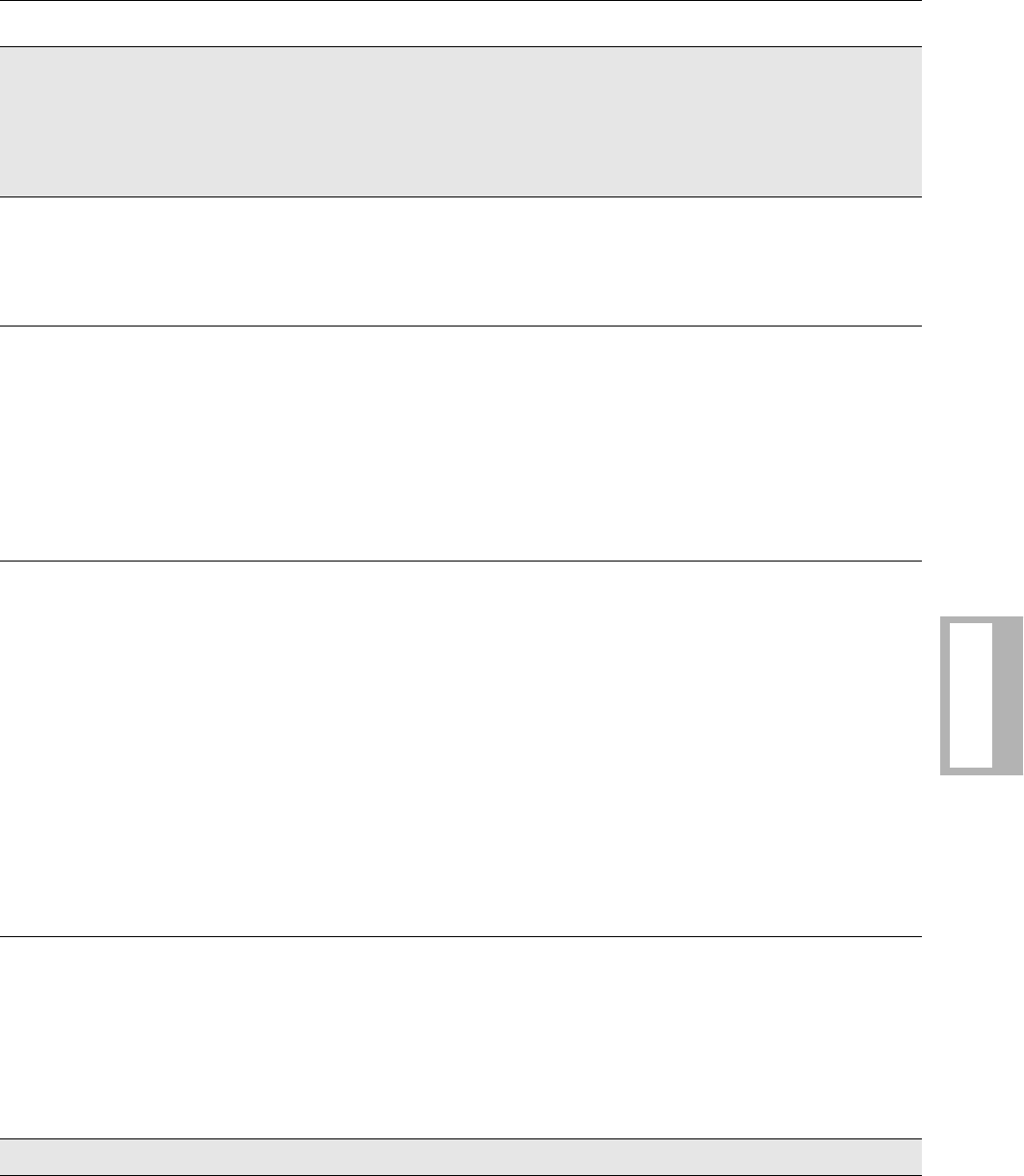
Configuration Quick Reference A-9
Configuration
Quick-Reference
AT X 2 =2 The modem waits for dial tone and uses only NO CARRIER, CONNECT, CONNECT <Rate>
and NO DIALTONE result codes.
AT X 3 =3 The modem detects busy signal and uses NO CARRIER, CONNECT, CONNECT <Rate>, and
BUSY result codes.
AT X 4 =4 The modem waits for dial tone and detects busy signal. Only NO CARRIER, CONNECT,
CONNECT <Rate>, BUSY, and NO DIAL TONE result codes are used.
AT Y 0
Longspace
=Off
Longspace Disconnect
The modem does not disconnect when it receives space longer than 1.6 seconds. When
terminating a call, the modem does not send continuous space for 4 seconds.
ATY1 =On The modem disconnects when it receives space longer than 1.6 seconds. When terminating a
call, the modem sends continuous space for 4 seconds.
ATZ0/ATZ1
Select Options
=1
Selecting an Option Set
The new option set takes effect immediately.
The modem uses Option Set 1.
ATZ2 =2 The modem uses Option Set 2.
ATZ3 =3 The modem uses Option Set 3.
ATZ4 =4 The modem uses Option Set 4. NOTE: The modem disconnects from the line when ATZ is
entered. Any test in progress is terminated. Since any AT command that follows ATZ is
ignored by the modem, ensure that ATZ is the last command entered in a command string. Use
the AT&Y command to select the option set in which the modem powers up.
DCD
DCD Control
Determines how the modem sets DCD signals. The modem signals the DTE with DCD on
EIA/TIA 232-D Pin 8 (V.24 Circuit 109).
AT&C0 =High DCD is always on.
AT&C1 =Normal DCD is off during dialing and while the modem is training with the remote modem. DCD is on
in data mode. It is off when the modem is disconnected from the telephone line.
AT&C2 =ACU On DCD is on when the modem is disconnected so that terminals requiring this signal can use the
ACU. During dialing, DCD goes off until both modems train and are ready to pass data. DCD
is on in data mode. DCD drops on a disconnect momentarily.
AT&C3 =Remote This setting applies to simulated half-duplex applications and works only if the remote modem
also supports RTS/DCD signaling. When the remote DTE turns RTS on, DCD is forced on at
the local modem. The local modem can receive data only during this period. Once the remote
DTE drops RTS, DCD at the local modem follows. The Rem RTS/DCD option lets you choose
the type of RTS/DCD signaling.
AT&C4 =Wink DCD is always on; however, it drops after disconnect and remains low momentarily.
DTR
DTR Control
This command determines how the modem interprets the DTR signal. The local DTE uses
DTR (Pin 20) to signal the modem.
AT&D0 =High The modem ignores DTR from the DTE. The modem reads DTR as always high. Choose this
option for DTR/CTS flow control with error correction, or if the DTE does not provide DTR
signal.
AT&D1 =Escape When ACU Select=AT and AT Form=Async (AT&M), the modem enters the AT Escape mode
(+++) when DTR goes off while the modem is in data or test mode.
Table A-1.
AT Commands, Cross-Referenced to Front Panel Options (Continued)
AT
Command
Parameter &
Option Description
Gray shading indicates country-specific options. See Appendix C for your country’s options.



